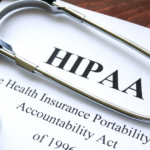
Protecting Patient Privacy: The Role of HIPAA Compliancy at Optimal Billing Solutions
March 20, 2024
Maximizing Revenue and Efficiency: The Benefits of Behavioral Health Billing with Optimal Billing Solutions
April 5, 2024In the ever-evolving healthcare industry, it is crucial for medical practices and facilities to stay up-to-date with the latest billing coding best practices. These practices are not only important for ensuring accurate and timely reimbursement but also play a significant role in maintaining compliance with regulatory agencies.
Billing coding refers to the process of translating medical procedures, diagnoses, and services into universal codes for billing and insurance purposes. These codes serve as a common language between healthcare providers, insurance companies, and government programs such as Medicare and Medicaid. As such, it is essential that medical professionals have a deep understanding of billing coding best practices to avoid errors that could result in financial losses or even legal consequences.
One of the key best practices in billing coding is accuracy. Mistakes in coding can lead to denied claims, delays in payment, or even fraud allegations. Therefore, it is critical for healthcare providers to ensure that all codes assigned accurately reflect the services provided. This includes proper documentation of procedures performed, diagnoses made, and any additional information required by payers.
Another important aspect of billing coding best practices is staying updated with changes in code sets and guidelines. The International Classification of Diseases (ICD) codes used for diagnoses is updated annually by the World Health Organization (WHO). Similarly, Current Procedural Terminology (CPT) codes used for reporting medical procedures are revised yearly by the American Medical Association (AMA). Staying informed about these updates ensures accurate coding and prevents claim denials due to outdated codes.
Maintaining compliance with regulations set forth by organizations like the Centers for Medicare & Medicaid Services (CMS) is also crucial when it comes to billing coding best practices. CMS has specific rules on what can be billed together or separately under certain circumstances. Failure to adhere to these guidelines can result in penalties or audits.
Proper training and education on billing coding best practices are vital for all staff involved in the revenue cycle process. This includes not only coders but also physicians, nurses, and administrative personnel who may be involved in documenting medical procedures or diagnoses.
Implementing the newest billing coding best practices is crucial for the success of any healthcare organization. By ensuring accuracy, staying updated with code changes, maintaining compliance with regulations, and providing proper training to staff, medical practices can stay ahead of the curve and avoid costly mistakes in their revenue cycle management.
Why It’s Important to Stay Ahead of the Curve
In today’s constantly evolving healthcare landscape, it is crucial for medical practices and billing companies to stay ahead of the curve in terms of billing coding best practices. With the introduction of new technologies, regulations, and industry changes, it is imperative that medical professionals continuously update their knowledge and skills to ensure accurate and efficient billing processes.
One of the main reasons why it’s important to stay ahead of the curve when it comes to billing coding best practices is because it directly impacts revenue. Outdated or incorrect coding can result in claim denials, delayed payments, or even audits from insurance companies. This not only leads to financial losses but also affects the overall reputation and credibility of a practice.
Moreover, staying up-to-date with the latest coding guidelines helps ensure compliance with regulatory bodies such as HIPAA (Health Insurance Portability and Accountability Act) and CMS (Centers for Medicare & Medicaid Services). Failure to comply with these guidelines can result in penalties, fines, or legal action against the practice.
Another significant reason why staying ahead of the curve is essential is that it enables medical professionals to provide quality patient care. Accurate coding ensures that patients are billed correctly for services rendered, which promotes transparency and trust between providers and patients. Additionally, proper documentation through correct coding allows for better data analysis and tracking of patients’ health outcomes.
Furthermore, implementing newer billing coding best practices can also improve operational efficiency within a practice. With advancements in technology such as electronic health records (EHRs) and automated coding software systems, time-consuming manual tasks can be streamlined. This frees up staff members’ time to focus on other important tasks such as patient care.
Staying current with billing coding best practices also demonstrates a commitment to ongoing education and professional development within a practice. It shows dedication towards providing high-quality services while keeping up with industry standards. This not only benefits current patients but also attracts potential ones who value updated processes and procedures.
Staying ahead of the curve in terms of billing coding best practices is crucial for financial stability, compliance, patient care, operational efficiency, and professional growth. It requires continuous learning and adaptation to changes in the healthcare industry. By incorporating the newest billing coding best practices, medical professionals can ensure accuracy, transparency, and success in their practice.
Understanding the Latest Changes in Billing Coding
The world of billing coding is constantly evolving, and it is crucial for healthcare organizations to stay updated with the latest changes in order to ensure accurate and efficient billing practices. In recent years, there have been several significant updates and revisions made to billing coding systems, such as ICD-10-CM codes and CPT codes. In this section, we will delve into the details of these updates and discuss how they may impact your organization’s billing processes.
ICD-10-CM Codes
In 2015, after much anticipation and preparation, the United States officially transitioned from ICD-9-CM codes to ICD-10-CM codes. This change brought about a significant increase in the number of available diagnosis codes, from approximately 14,000 in ICD-9-CM to over 68,000 in ICD-10-CM. This expansion allows for greater specificity and accuracy when reporting diagnoses, which can improve reimbursement rates by ensuring that services are properly coded.
In addition to an increase in the number of codes, there have also been updates made to some existing codes. For example, some ICD-10-CM codes now specify laterality (left or right side) or additional details about a condition that were not previously included under ICD-9-CM codes. These changes require coders to have a thorough understanding of anatomy as well as up-to-date codebooks and software programs.
CPT Codes
Current Procedural Terminology (CPT) codes are used to report procedures and services performed by healthcare providers. The American Medical Association (AMA) makes annual updates to CPT codes based on advancements in medical technology and changes in healthcare practices.
In 2020 alone, there were over 300 new CPT code additions as well as revisions and deletions of existing codes. Some notable changes include new E/M (evaluation and management) codes for office and outpatient visits, as well as new codes for digital health services. These updates aim to better reflect the services provided by healthcare providers and improve accuracy in reporting.
Impact on Billing Processes
Staying updated with the latest changes in billing coding is crucial for healthcare organizations as it can directly impact their revenue cycle. With the implementation of ICD-10-CM codes, it is essential to ensure that coders are trained and knowledgeable about the new coding system to avoid claim denials or delays in reimbursement.
Moreover, changes in CPT codes also require thorough understanding and proper education for coders to accurately report procedures and services performed. Failure to use current codes could result in undercoding or overcoding, both of which can have negative financial implications.
Staying informed about the latest changes in billing coding systems is vital for healthcare organizations to maintain efficient billing practices. It is important to regularly review codebooks and software updates, provide ongoing education and training for coders, and implement processes to track any changes made by regulatory bodies. By staying ahead of these
Best Practices for Accurate and Efficient Coding
Accurate and efficient coding is essential for any healthcare organization to ensure proper reimbursement and avoid potential compliance issues. Here are some key best practices that our team at Optimal Billing Solutions follows:
- Stay Up-to-Date with Coding Guidelines:
The first step in ensuring accurate coding is staying updated on the latest coding guidelines. These guidelines are regularly updated by organizations such as the Centers for Medicare & Medicaid Services (CMS) and the American Medical Association (AMA). It is vital to keep track of any changes in these guidelines to avoid errors that could lead to claim denials or audits.
- Use Appropriate Code Modifiers:
Code modifiers provide additional information about a service or procedure that has been performed, which helps in accurately describing the services provided. Using appropriate code modifiers can prevent incorrect payments, reduce claim denials, and improve data accuracy.
- Perform Regular Audits:
Regular internal audits are an essential part of maintaining accurate and efficient coding practices. These audits can help identify any errors or discrepancies in the coding process and allow for prompt corrections before they lead to bigger issues such as denied claims or regulatory violations.
- Provide Ongoing Training:
Coding rules and regulations are continuously changing, making it crucial for coders to receive ongoing training to stay updated with new developments. Providing regular training opportunities will not only improve accuracy but also increase efficiency by ensuring coders are using the most up-to-date codes and guidelines.
- Utilize Technology Solutions:
Technology solutions such as electronic health records (EHRs) and automated coding software can significantly enhance accuracy and efficiency in coding processes. By automating certain aspects of the coding process, these tools can reduce human error, streamline workflows, and ultimately save time.
- Clarify Any Unclear Documentation:
Clear documentation from providers is critical in ensuring accurate coding. If there is any uncertainty or ambiguity in the documentation, it is crucial to clarify with the provider before proceeding with coding. This will not only help prevent errors but also improve communication between coders and providers.
- Maintain Consistent Communication:
Clear communication between all parties involved in the coding process is vital for accurate and efficient coding. Coders should regularly communicate with providers to clarify any questions or concerns about documentation, and keep an open line of communication for feedback and education.
By implementing these best practices, healthcare organizations can ensure accuracy and efficiency in their coding processes, leading to timely reimbursement and compliance with regulations. It is essential to continually assess and improve upon these practices as the healthcare landscape continues to evolve. Staying ahead of the curve will not only benefit your organization financially but also promote high-quality patient care.
The Future of Billing Coding Best Practices
As technology progresses and regulations change, it is essential for medical professionals to stay updated on the latest trends in billing coding. In this section, we will discuss the future of billing coding best practices and how healthcare providers can prepare themselves to stay ahead of the curve.
One of the most significant changes in billing coding is the shift towards electronic health records (EHRs). With EHRs becoming a standard practice, traditional paper-based claims are being replaced by electronic submissions. This not only reduces administrative work but also improves accuracy and efficiency in claim processing. In addition, EHRs allow for real-time access to patient information, making it easier to code accurately and minimize errors.
Another trend that is gaining momentum in billing coding is the use of artificial intelligence (AI) and machine learning algorithms. These technologies have shown great potential in automating repetitive tasks like data entry and error detection. By implementing AI-driven systems into their processes, healthcare facilities can save time and resources while improving claim accuracy.
The future also holds advancements in telemedicine services, which allow patients to receive virtual care from remote locations. This presents new challenges for billing coding as it requires specific codes for telehealth services. Healthcare providers need to ensure that their coders are well-versed in these codes to avoid rejected claims or delays in reimbursement.
Furthermore, there has been an increased focus on compliance with government regulations such as HIPAA (Health Insurance Portability and Accountability Act) and ICD-10 (International Classification of Diseases). It is crucial for medical professionals to understand these guidelines thoroughly as non-compliance can result in penalties or even legal action.
With consumerism on the rise, patients are demanding more transparency when it comes to their medical bills. This has led to an increase in price transparency tools that provide patients with estimates of costs before receiving treatment. As a result, healthcare providers must ensure their coding practices are accurate and that patients are billed correctly.
To prepare for the future of billing coding best practices, it is crucial for healthcare providers to invest in continuous education and training for their coders. This will not only keep them updated on the latest trends but also help them improve their skills in utilizing new technologies.
The future of billing coding best practices is rapidly changing with technological advancements and evolving regulations. Healthcare facilities must stay informed about these changes and adapt their processes accordingly to ensure efficient and accurate claim submissions. By staying ahead of the curve, medical professionals can ensure compliance, reduce administrative burden, and ultimately provide better care for their patients.





